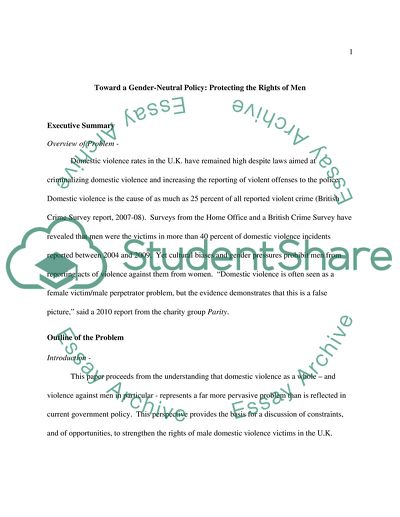Cite this document
(Toward a Gender-Neutral Policy: Protecting the Rights of Men Term Paper - 1, n.d.)
Toward a Gender-Neutral Policy: Protecting the Rights of Men Term Paper - 1. Retrieved from https://studentshare.org/social-science/1748199-designing-public-policy
Toward a Gender-Neutral Policy: Protecting the Rights of Men Term Paper - 1. Retrieved from https://studentshare.org/social-science/1748199-designing-public-policy
(Toward a Gender-Neutral Policy: Protecting the Rights of Men Term Paper - 1)
Toward a Gender-Neutral Policy: Protecting the Rights of Men Term Paper - 1. https://studentshare.org/social-science/1748199-designing-public-policy.
Toward a Gender-Neutral Policy: Protecting the Rights of Men Term Paper - 1. https://studentshare.org/social-science/1748199-designing-public-policy.
“Toward a Gender-Neutral Policy: Protecting the Rights of Men Term Paper - 1”, n.d. https://studentshare.org/social-science/1748199-designing-public-policy.


